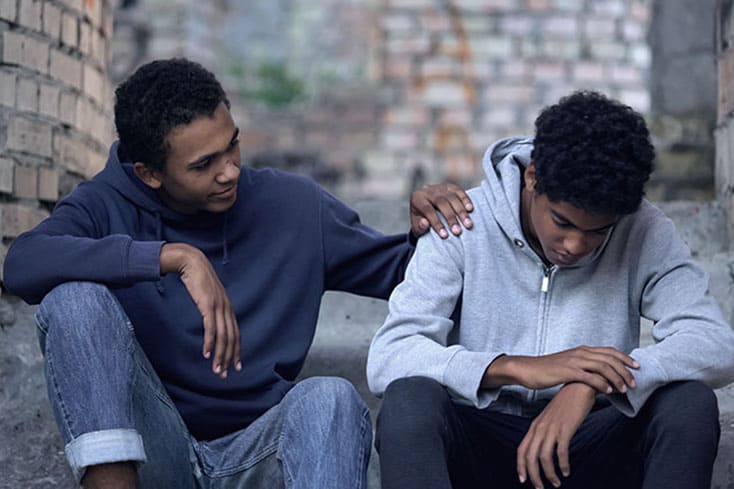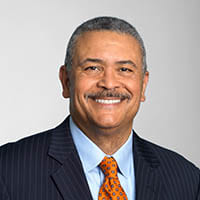April 19, 2022
By Daniel H. Gillison

Cheslie Kryst was crowned Miss USA, achieved her J.D. to work as an attorney to help reform the U.S. criminal justice system and established herself as a successful online fashion blogger and entertainment news correspondent. Ian Alexander Jr. was the son of acclaimed actor and producer Regina King; he frequently accompanied his mom to red carpets and was pursuing a promising career as a deejay. And Katie Meyer was on the dean’s list at Stanford University, where she was also captain of the soccer team.
Despite the appearance of so much success, happiness and potential for the future, all three of these young people tragically died from suicide earlier this year. Cheslie was 30 years old; Ian was about to turn 26; Katie was only 22.
The loss of these bright and talented young people serves as a harrowing reminder of what CDC statistics have recently further confirmed: Our young people are struggling. We are in a youth mental health crisis. And the need to talk about and address this crisis is urgent.
According to CDC statistics released last month:
And not all young people were impacted equally.
Female students were more than twice as likely to have attempted suicide compared to male students. Lesbian, gay and bisexual students were twice as likely to report physical abuse at home compared to their heterosexual peers. Black students were most likely to report hunger. Asian, Black and multiracial students were most likely to report experiencing racism at some point during their life. And students who had experienced racism were more likely to report poor mental health and not feeling connected to others at school during the pandemic.
Young people’s mental health has been struggling for a long time. Before COVID-19, suicide was already reported as the second-leading cause of death among people aged 10–34, and the CDC reported that youth mental health was already declining. But since the start of the pandemic, the state of youth mental health has undoubtedly worsened.
Between the constant comparisons and challenges to keep up with the pressure to perform on social media; the expectation of being “always on” that comes with technology, instantaneous communication and troubling news cycles; the isolation, uncertainty, trauma and grief that have come from an unprecedented global crisis; and the recent legislative attacks against LGBTQ+ youth, who are already a vulnerable population… Young people today are being challenged in ways we couldn’t believe.
We all have a responsibility to help.
The first step to show up for our young people is to listen to them. We can’t assume we know how they are really doing, and we can’t assume we know what they need. We have to be intentional about asking, and we have to give them the judgment-free space to truly answer.
That’s why we started NAMI Next Gen, an advisory group representing the voices of youth and young adults across the country to advise, create and innovate NAMI programs and content aimed at meeting young people where they are. We received more than 760 applications for this new group — which tells us that there are not only so many young people who are struggling, but there are also so many young people who want to help. We just have to let them.
We need to listen to our young people. We need to commit to keep learning about what they are going through. And we need to invest in them.
We can’t afford to lose any more young people to suicide or to allow them to suffer in silence any longer.
Our young people need us — and we need them.
Youth Mental Health Resources:
 Daniel H. Gillison, Jr. is the chief executive officer of NAMI (National Alliance on Mental Illness). Prior to his work at NAMI, he served as executive director of the American Psychiatric Association Foundation (APAF) in addition to several other leadership roles at various large corporations such as Xerox, Nextel, and Sprint. He is passionate about making inclusive, culturally competent mental health resources available to all people, spending time with his family, and of course playing tennis. You can follow him on Twitter at @DanGillison.
Daniel H. Gillison, Jr. is the chief executive officer of NAMI (National Alliance on Mental Illness). Prior to his work at NAMI, he served as executive director of the American Psychiatric Association Foundation (APAF) in addition to several other leadership roles at various large corporations such as Xerox, Nextel, and Sprint. He is passionate about making inclusive, culturally competent mental health resources available to all people, spending time with his family, and of course playing tennis. You can follow him on Twitter at @DanGillison.
We’re always accepting submissions to the NAMI Blog! We feature the latest research, stories of recovery, ways to end stigma and strategies for living well with mental illness. Most importantly: We feature your voices.
LEARN MORENAMI HelpLine is available M-F, 10 a.m. – 10 p.m. ET. Call 800-950-6264,
text “NAMI” to 62640, or email. In a crisis, call or text 988 (24/7).